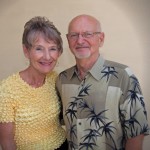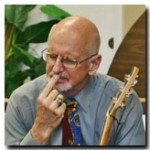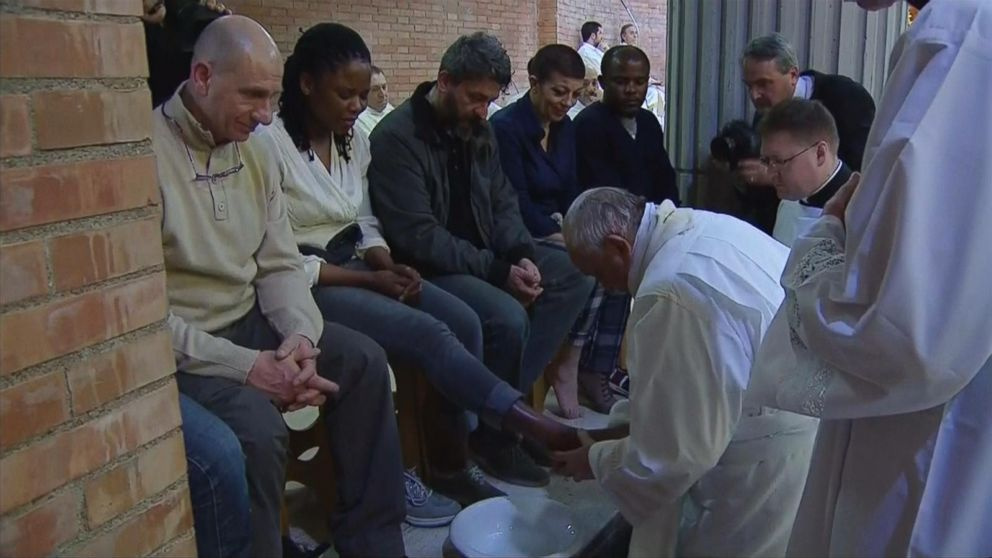 Following is a current report from Religion News Service of a West Coast revival. Some will immediately brand this the devil’s work. Some will claim the leaders are deceivers. Others will say, “Bring it on here!” While others won’t know what to think.
Following is a current report from Religion News Service of a West Coast revival. Some will immediately brand this the devil’s work. Some will claim the leaders are deceivers. Others will say, “Bring it on here!” While others won’t know what to think.
Need for Revival.
One comment before the report. I think the church in the U.S. needs a revival. (What that should look like isn’t for me to say.) Despite mega-churches and high-production worship services and sermons and music galore on smartphones, I get the impression that Christianity in America is, as they say about Tampa Bay’s waters, a mile wide and an inch deep. The church needs renewing. Whether what’s happening on the West Coast is part of that renewing remains to be seen.
But the question before us now is this: What are we to make of this West Coast revival?
Distinguishing Marks of the Spirit’s Work.
In my next post, I’ll apply Jonathan Edwards’ “The Distinguishing Marks of the Work of the Spirit of God” to “The West Coast Rumble” (let’s not pre-judge because of that name!) and similar events, so we might wisely discern the true from the counterfeit.
* * * * *
Pentecostal Revival Sweeps Parts of West Coast
(RNS) They call it the West Coast Rumble: a set of multiweek revivals in Seattle and San Diego, plus a large Christian rally in Los Angeles two weekends ago.
The main players are 30-something Pentecostals who are just as apt to broadcast their messages via Periscope, Skype and Twitter, as well as on their ministry’s Facebook pages.
Can’t make it to their meetings? They’ll pray for you over their cellphones.
They belong to a loose network of roving preachers who have adopted some techniques from past Pentecostal revivals but with a digitized spin. They hope to bring faith to a region that has some of the country’s lowest church attendance.
“I feel like in the Northwest we are giving birth to a baby and it needs to be nurtured,” said Darren Stott, 34, pastor of the Seattle Revival Center, a 170-member nondenominational church where the revival is now in its eighth week. “For me, to be a pastor in Seattle is easy. To be a revivalist and contend for miracles is difficult.”
The center has hired several part-time workers to oversee the revival, stream online video and schedule and pay for a succession of visiting worship bands and speakers. The church has posted a list of hotels on its site for visitors who have flown in from around the Pacific Northwest and Australia. While an average of 210 people attend nightly services, an additional 225 people will watch the entire four-hour service online, with up to 1,000 people logging in and out on any given night.
Meanwhile, in the San Diego suburb of Rancho Bernardo, a series of meetings that was supposed to end Jan. 25 has morphed into what is now a 12-week revival. The meetings were sponsored by an Albany, Ore., group called The Elijah List and headed up by two evangelistic couples: Jerame and Miranda Nelson and Joshua and Janet Mills.
“We began to notice an unusual manifest presence of God invading the meetings,” Jerame Nelson, 35, wrote on elijahlist.com. “Miracles were happening quite easily and people were really getting touched by God during the worship times.”
Just the week before, Nelson continued, a Franklin, Tenn., evangelist named James Goll, 63, had prophesied that a “West Coast rumble” would break open in port cities along the West Coast from Tijuana, Mexico, to Vancouver, B.C.
San Diego, Goll had told Nelson, would be the first spark in this spiritual line of fire. So when Joshua Mills asked Nelson if they should continue the meetings, “I immediately said, ‘Yes, let’s do it!’” Nelson wrote on the site.
The San Diego meetings are part of a tapestry of events connected to Azusa Now, a large evangelistic meeting held April 9 at the Los Angeles Coliseum that attracted 56,586 worshippers.
Perhaps the most unusual occurrence during the rally was when Catholic charismatic leader Matteo Calisi knelt and kissed the feet of Azusa Now organizer Lou Engle in the name of Catholic-Protestant reconciliation. (Engle then returned the favor.)
The event marked the 110th anniversary of the legendary Azusa Street Revival, which birthed the Pentecostal movement in the U.S. Led by William Seymour, a pastor whose prayer meetings lasted for some four years, the 1906 revival sparked a massive spiritual awakening that today numbers some 279 million adherents worldwide. Known for having received the gifts of the Holy Spirit, Pentecostals often speak in tongues and dance during worship services and report healings and other miracles.
Seymour is said to have prophesied that an even greater revival would happen a century later.
Charlie Shamp, 34, a Nashville preacher who helped jump-start the Seattle meetings, said he doesn’t like calling the West Coast Rumble a revival.
“They only last a year or two,” he said. “I really believe this is the Third Great Awakening. So many people are feeling it across denominational lines.”
In late February, Shamp appeared for what was supposed to be one weekend at the Seattle Revival Center in Newcastle, a well-to-do Seattle suburb. He ended up staying for five.
The church established a Twitter handle, #westcoastrumble, and began live-streaming the nightly services. Viewers from around the world could log in, chat, leave comments and register prayer requests.
Now the 350-seat church is full most weekends. Explaining this to his congregation on March 6, Stott said: “The Lord spoke to me and said, ‘This whole thing is going harvest.’”
During a typical meeting in both venues, the preacher will get what charismatics call a “word of knowledge,” usually an interior sense that God is healing certain people of a particular ailment.
Those who are physically at the church will walk up to the front to be prayed for, although online viewers can also identify themselves as having that ailment. One of the pastors — usually Stott — monitors the viewer feed and will announce to the congregation the names of people claiming to be healed or asking for prayer.
Chelsie Carbonell, 36, an artist from Bonney Lake, Wash., attended a session a few weeks ago, just as visiting evangelist Munday Martin, 38, of Nashville, Tenn., announced that someone who’d been in multiple car accidents would be healed.
Carbonnell had been in a series of accidents in the 1990s and felt she was out of alignment.
She went forward and Martin told her to sit down, as he wanted to pray for her legs to be the same length.
“I don’t think the problem is my legs,” Carbonell told him.
“Will you let a crazy evangelist try?” Martin asked her.
“My left leg grew out right then,” Carbonell said later. “I felt it. It was a strange, quick sensation. It took me four days to walk normally but now I’ve been able to jog for the first time in years.”
The congregation has no doctor-verified healings, although on March 11, it posted on its Facebook page a PET scan of what appeared to be a person’s spine and identified as “before and after photos of Stage 4 cancer.”
“I want to assemble a team to pursue these people,” Stott said. “Once we get X-rays, that kind of stuff, I will take that and publicize that on bulletin boards in Seattle. I’ve seen so many people from our immediate congregation healed. That has boosted my faith.”
In San Diego, Nelson wrote, “glaucoma healed, metal plates and pins that had been surgically inserted into people’s bodies have dissolved, deaf ears are hearing, deformities from birth are being healed, and many are getting saved, reconciled to God, and filled with the Holy Ghost.” He did not respond to requests for an interview.
Shamp, who eventually left Seattle Revival Center to fulfill other speaking engagements, said he’s seeing similar meetings around the country.
“I just got back from Columbus, Miss., and it exploded there as well,” he said.
Shamp said he was inspired by members of a 1980s movement known as the Kansas City Prophets, a loose network of Christian leaders who considered themselves apostles and prophets to the church. He called one of those leaders, Paul Cain, a week before going to Seattle in February, to ask for prayer.
“He said, ‘The angel of the Lord is going to be connected with you now,’” Shamp recalled. “‘You will not leave Seattle until the angel tells you to go.’”
Shamp, Nelson and other revivalist leaders are part of an informal network of two dozen Pentecostal and charismatic ministers, mostly under age 40, who like to push the envelope on spiritual healing.
They’ve integrated controversial parts of past U.S. revivals: reports of feathers mysteriously floating through the air during services, gold fillings appearing in the mouths of attendees, hands covered with oil or gold dust and people being overcome with fits of so-called holy laughter.
Holly Pivec, who co-authored a 2014 book with Biola University philosophy professor Doug Geivett on the movement, said these revivalists are part of the New Apostolic Reformation within the wider charismatic movement.
“They share a common belief that the church is to be governed by apostles and prophets,” she said. Churches come voluntarily under an apostle and pastors are supposed to submit to them. “Spiritual covering” is what they call it, and if they are not under this covering, they are outside of God’s blessing.
“Whole generations of young people have grown up under these NAR teachings. It’s the only version of Christianity they’ve ever known. Some 3 million people in the United States attend churches that embrace these teachings.”
Stott, whose church broke with the Assemblies of God a year ago, has been sending members out into nearby neighborhoods to do street evangelism.
He told his congregation April 6: “We are about to enter a zone where no man has ever gone before. The Lord spoke to me and said, ‘I’m going to freak you right out with the things that I’m going to be doing because you’re going to have no grid for it. … The Lord’s about to take us on some roads that don’t exist on human maps.”
 What a fitting, beautiful, God-present way to begin Sunday Worship!
What a fitting, beautiful, God-present way to begin Sunday Worship! “The days of gospel persecution in the United States no longer just hang on the distant horizon; they are already here, at least for some. It’s beginning with the bakers, florists, and photographers. Before long, the consensus may be that faithful biblical exposition is ‘hate speech’ (John Piper, Desiring God Ministries, Think It Not Strange). Fear mongering? Hardly. The signs are here. And for some, the substance has started.
“The days of gospel persecution in the United States no longer just hang on the distant horizon; they are already here, at least for some. It’s beginning with the bakers, florists, and photographers. Before long, the consensus may be that faithful biblical exposition is ‘hate speech’ (John Piper, Desiring God Ministries, Think It Not Strange). Fear mongering? Hardly. The signs are here. And for some, the substance has started.

Recent Comments